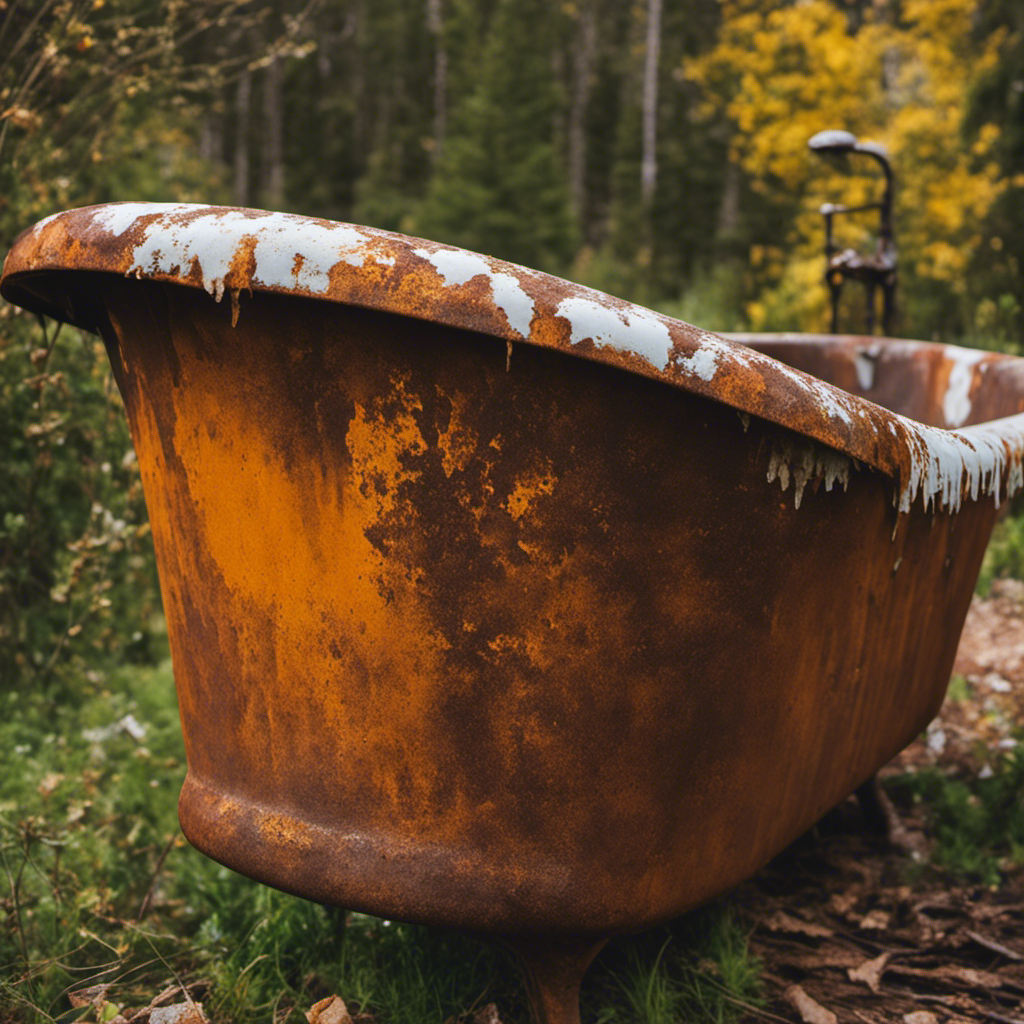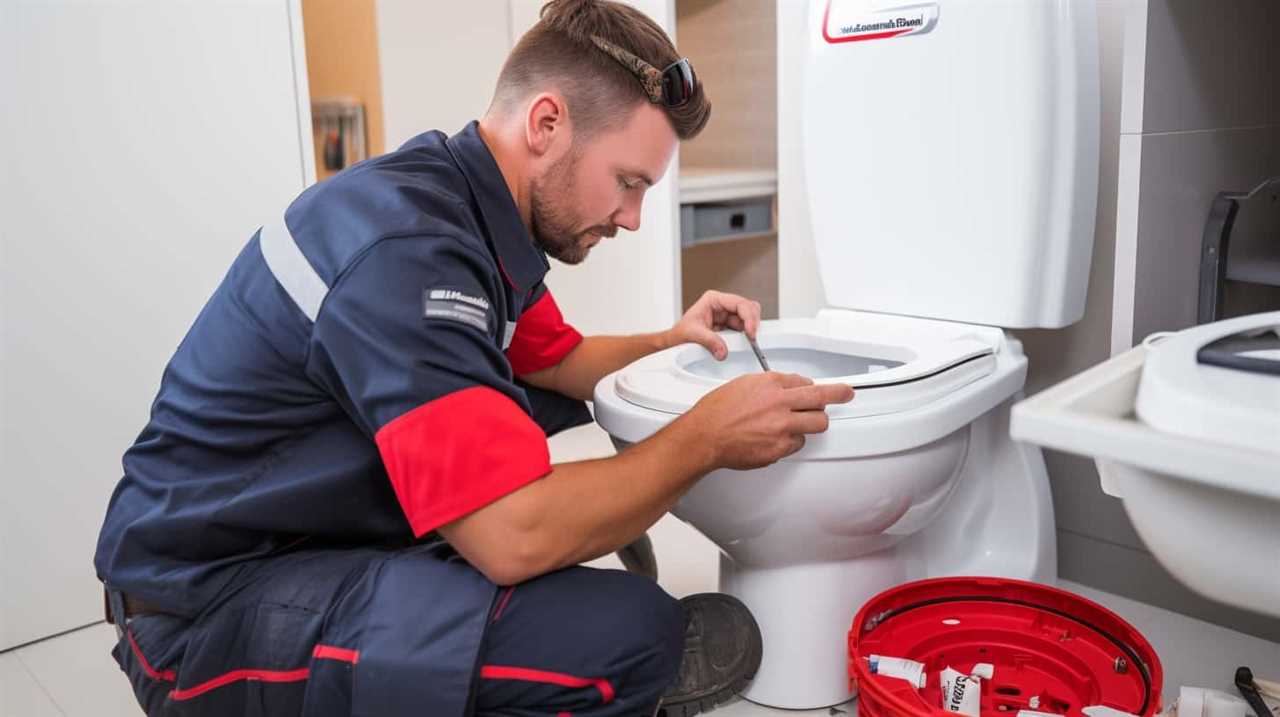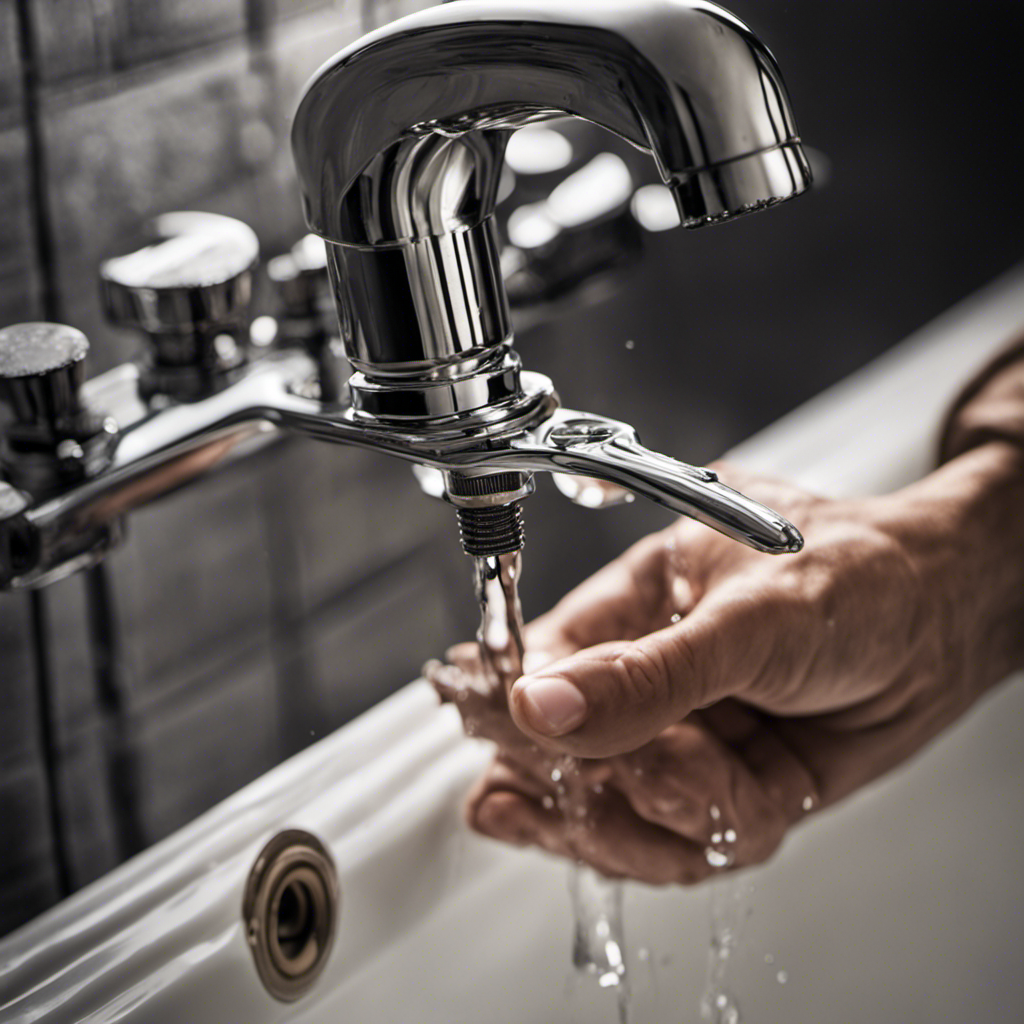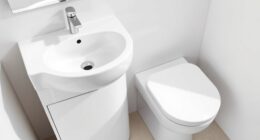As a homeowner, I know the frustration of dealing with a rusted bathtub. It’s like a pesky symbol of neglect, slowly eroding away the beauty of your bathroom.
But fear not, because in this article, I will guide you through the process of repairing your rusted bathtub. With my step-by-step instructions and a few essential tools, you’ll be able to restore your tub’s former glory and prevent future rust formation.
Let’s dive into this bathtub rescue mission together!
Key Takeaways
- Identify the causes of rust, such as exposure to moisture, improper cleaning, or use of abrasive cleaning agents.
- Use the right cleaning products, such as oxalic acid or citric acid-based rust removers, and consider professional bathtub repair services for extensive damage.
- Be patient and use techniques like applying rust removal solution and scrubbing with a wire brush, or using natural remedies like lemon and salt, vinegar and baking soda, or potato.
- Inspect for weakness or damage, reinforce weak areas with fiberglass or epoxy resin, replace damaged parts, and restore shine with a bathtub refinishing kit.
Assessing the Extent of Rust Damage
Before you begin repairing the rusted bathtub, it’s important to assess the extent of the damage. Identifying the causes of rust is crucial in understanding the severity of the problem.
Rust can occur due to exposure to moisture, improper cleaning, or the use of abrasive cleaning agents. Regular maintenance is crucial in preventing rust. Neglecting the bathtub and allowing water to sit for extended periods can lead to rust formation.
Inspecting the bathtub thoroughly can help determine the areas affected by rust. Look for discoloration, flaking paint, or rough patches on the surface. Pay close attention to the drain and faucet areas as they are prone to rusting.
Gathering the Necessary Tools and Materials
Make sure you have all the tools and materials needed for the job.
When repairing a rusted bathtub, it’s essential to gather the right products and services to ensure a successful outcome. Here are four key items to consider:
-
Choosing the right cleaning products: Selecting the appropriate cleaning solutions is crucial in removing rust stains effectively. Look for products specifically designed for rust removal, such as those containing oxalic acid or citric acid.
-
Finding professional bathtub repair services: Depending on the extent of the rust damage, it may be necessary to seek professional help. Research and contact reputable bathtub repair services in your area to assess the severity of the rust and determine the best course of action.
-
Safety equipment: Always prioritize safety when working with cleaning products and rust removal. Wear gloves, goggles, and a mask to protect yourself from any harmful chemicals or fumes.
-
Tools for surface preparation: Gather sandpaper, wire brushes, or scrub brushes to remove loose rust and roughen the surface for better adhesion of repair materials.
Removing Rust From the Bathtub Surface
To remove the rust from your bathtub surface, start by applying a rust removal solution and scrubbing with a wire brush. There are various rust removal techniques you can use, including natural remedies. Here are a few examples:
| Technique | Ingredients | Steps |
|---|---|---|
| Lemon and salt | Lemon juice, salt, and water | 1. Squeeze lemon juice onto rusted area. 2. Sprinkle salt over the lemon juice. 3. Let it sit for a few hours. 4. Scrub with a wire brush. |
| Vinegar and baking soda | Vinegar, baking soda, and water | 1. Make a paste with vinegar and baking soda. 2. Apply the paste to the rusted area. 3. Let it sit for an hour. 4. Scrub with a wire brush. |
| Potato | Potato and dish soap | 1. Cut a potato in half. 2. Apply dish soap to the cut side. 3. Rub the potato on the rusted area. 4. Scrub with a wire brush. |
These natural remedies can be effective in removing rust from your bathtub surface. Make sure to follow the steps carefully and be patient, as rust removal may take some time and effort.
Repairing and Restoring the Bathtub’s Structure
You can restore the structure of your bathtub by reinforcing weak areas and replacing damaged parts. Here’s what you need to do:
-
Inspect the bathtub for any signs of weakness or damage. Look for cracks, chips, or areas that feel weak when pressed. These areas will need to be reinforced to ensure the bathtub’s structural integrity.
-
Reinforce weak areas using fiberglass or epoxy resin. Apply the resin to the weakened area and then cover it with fiberglass cloth. This will provide added strength and stability to the bathtub.
-
Replace any damaged parts, such as the drain or overflow cover. If the drain is rusted, you’ll need to remove it and replace it with a new one. Make sure to clean the area around the drain thoroughly before installing the new one.
-
Finally, restore the bathtub’s shine by giving it a thorough cleaning and applying a bathtub refinishing kit. This will help to remove any stains or discoloration and give your bathtub a fresh, new look.
Preventing Future Rust Formation
By regularly cleaning and applying a protective coating, you can effectively prevent future rust from forming on your bathtub.
Rust stains not only look unsightly but can also cause further damage to your bathtub if left untreated.
To maintain the cleanliness of your bathtub and prevent rust from forming, it is crucial to establish a cleaning routine.
Start by using a non-abrasive cleaner to remove any dirt or soap scum buildup. Rinse thoroughly and dry the surface completely.
Once the bathtub is clean, apply a protective coating such as a rust inhibitor or bathtub refinishing product. This coating will act as a barrier, preventing moisture from coming into contact with the metal surface and reducing the chances of rust formation.
Regular maintenance and preventative measures will ensure your bathtub remains rust-free and in excellent condition for years to come.
Conclusion
In conclusion, repairing a rusted bathtub requires careful assessment, the right tools, and a methodical approach.
By visualizing the extent of rust damage and gathering the necessary materials, you can begin the restoration process.
Removing the rust and restoring the bathtub’s structure will bring back its former glory.
With proper maintenance and preventive measures, you can ensure that rust formation becomes a thing of the past.
So, grab your tools and let’s turn that rusty tub into a gleaming oasis of relaxation.










